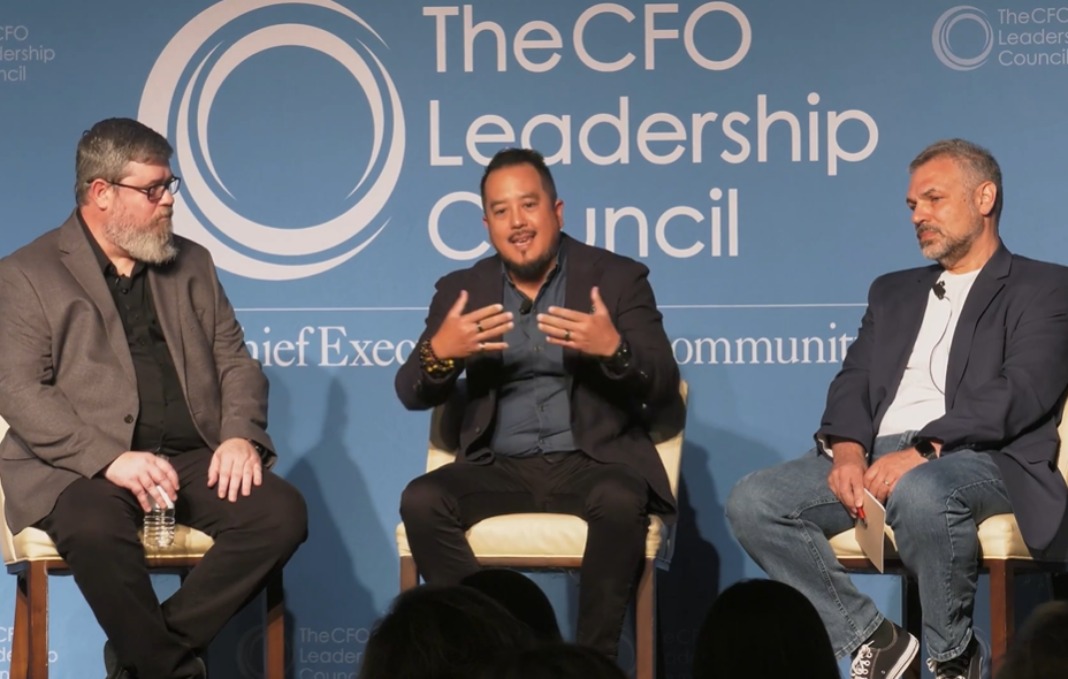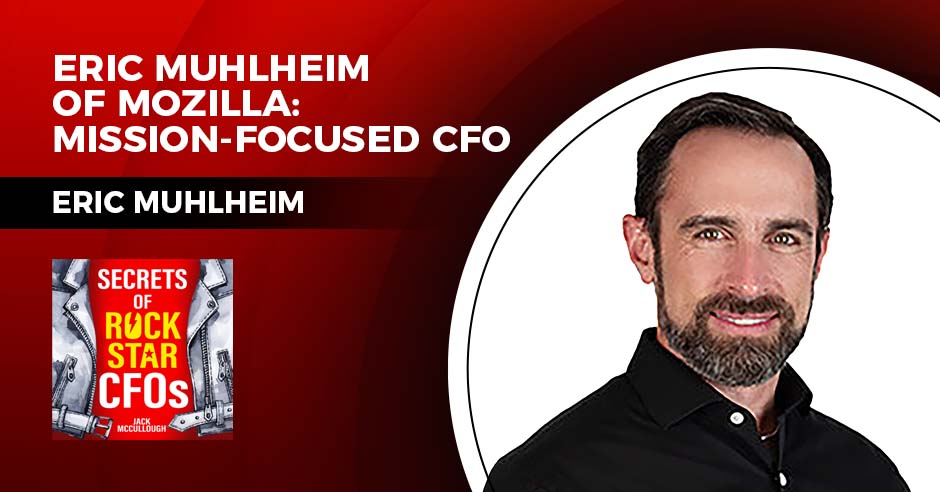Storytelling isn’t just for marketers anymore, as a variety of C-level leaders will attest. But can CFOs actually create and communicate narratives that effectively advance a company’s goals not only with customers but also with investors, employees and supply chain partners?
Emphatically yes, three experts who know told the CFO Leadership Council West gathering in Phoenix recently.
“The most important job for any CFO is storytelling,” said Michael Bayer, CFO of cloud-storage provider Wasabi Technologies (right in photo). “If you’re talking to an investor, they may not want to invest, and you are trying to get them to do that. It may be talking with employees to get them over feeling the risk of an early-stage startup. With customers, it’s about having a trusting relationship with you. You need to paint a grand vision of how customers, vendors and employees will have something that is better afterward.”
Spinning narratives establishes “emotional connections,” said Kevin Galloway, a former actor, writer and director who’s now sales enablement and communications advisor for Oracle NetSuite (left in photo). “Why does that apply in the CFO world? That’s what connects everyone in the world, even in business. In business there are lots of true emotions—good, bad and ugly. You have to learn to tap into that.”
Erik Nakamura, CFO of Orange Comet, an online-gaming company (middle in photo), said that being able to persuade via narratives can be important to a finance chief’s ability to “become a trusted business partner” to customers, board members and other constituencies — “not just a numbers person. You need to understand the go-to-market strategy. That’s how you add value, and storytelling is key. The CEO [also] needs to look at you as a strategic business partner. The numbers part is table stakes; it’s about elevating above that, resonating, showing passion, having a voice.”
The three executives offered ideas for how finance executives can harness an art of corporate storytelling that hasn’t always been native to their function:
Focus on primary elements. Conflict and emotion are central to any interesting story, Galloway said, using Seinfeld as an example. “The show was touted as ‘a great show about nothing,’” he said. “But that wasn’t true. It was actually riddled with conflicts, which were ridiculous and often silly, but the characters were conflicted” and emotional about it.
Also, Galloway urged, “Know your audience; that can change your story.” And, he added, “You have to be authentic in every story you tell. You should never tell a story you don’t know, understand and believe. If you truly believe what you’re saying, your audience will believe it.”
Make data your friend. For finance executives, producing and understanding data comes as first nature. But numbers don’t necessarily make for great stories. So, these experts said, use the data effectively.
“It starts off with what data you’re using, what story you’re trying to tell, and goes back to how to relate that to something the person is interested in,” Bayer said. “Audiences just want to know what’s going on, what’s going down, and what does that mean [and] what should they do about it. Relate your story to the underlying data and turn it into information they can use.”
Don’t let the data dictate the narrative. “You can tell any story with the same data,” Bayer said. “It’s up to you to figure out what points you can put together to tell your story. [Even including] how conflicting data points relate to one another.”
Master tricks of the trade. CFOs may be infamous for overloading their PowerPoint presentations with statistics and long, drab text because they are data-oriented. But their pitches don’t have to be dull and can use storytelling tools to be especially effective.
“Use visuals—up, green; down, red,” Nakamura said. “It’s pretty simple. How much time does someone have to read a deck? They want to know what you’re selling and what you’re telling me. That’s why having an executive summary at the beginning is very important; no one will get to page 30.”
Also, he said, presenters should understand whether their audience members are primarily visual or auditory learners, or “doers.” “Understand who the audience is and create data and information that fit their skill set. Make it fun and interesting and engage people. ‘CFO’ doesn’t stand for ‘chief fun officer,’ but you can try to make it that way.”
Galloway urged the use of color in decks. “Color is tied to emotions and to things we remember,” he said. “Red is ‘danger’ or ‘stop.’ Green is ‘go’ or money. You can use some of that in your visuals.” And, he said, don’t use a font size below 20 points in a deck. “You need to edit and condense. You are the bridge to the audience. The storyteller. You have to bring all of that to life.”
Develop a “catalogue” of stories. “You’re not going to use the same story all the time,” Galloway said. “The audience changes. People change.”
Express your personality and personal style. “If you’re not comfortable making jokes in presentations, don’t,” Bayer said. “But if you like to ham it up a bit, go ahead, within boundaries. Find your own style. It’s important to come across as sincere in whatever style that is. Be comfortable in your own skin.”
Don’t forget one-on-one. Perhaps more often than not, CFOs must share narratives one-on-one or with small groups rather than in presentations before crowds.
Galloway said to start in such situations with the truth that “it’s better to be interested than interesting. Be interested first, whoever the audience is. Get their story first so you [know] their story and can become part of that.”
“Where do I sit in the room?” is one factor Nakamura said finance executives should consider in such situations—a decision that affects the performance of the narrative they’re sharing with, say, potential customers or investors. “Not just have people on either side of a table, but integrate, making for a less adversarial-seeming relationship” he said. “It’s not, ‘You have to write us a check, and we have to convince you to do it.’”
Be sensitive during presentations “to people’s pain points and resignation points. With VCs, for instance, it’s about growth and positive returns, and sometime in the future can you execute. You can answer those questions through data, and the CEO should be able to pitch the value proposition, and you have to come in with the data to support that. And remember the numbers so you can speak them off the top of your head. You have to instill confidence.”
Learn how to tell negative stories. Rip off the Band-Aid. “Bad news doesn’t get better with time,” Bayer said. “Give them the good news fast but the bad news faster. What is the audience going to do—yell about it? Tell them it’s bad news. [Then] move into a solution mindset.” Added Nakamura, “Sometimes use, ‘areas for improvement.’ It’s a positive way of saying, ‘We need to get better.’”








